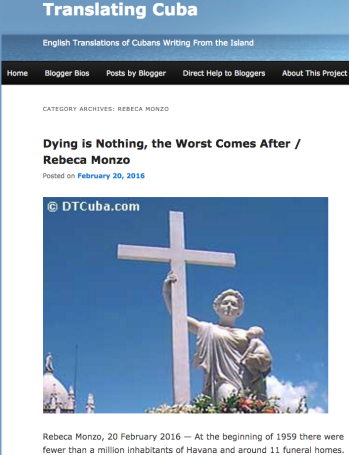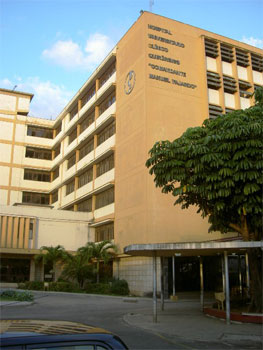
Rebeca Monzo, 13 November 2015 — As I see it, it would be incorrect to claim there is a Cuban style. During the last fifty years Cuban men and women on the island have been dressing any way they can with whatever was sent to them by overseas relatives, by repurposing old clothes or, in recent years, with contributions by those who had the opportunity to travel and brought back clothing of low-quality for resale. Until now, the only major points of reference on which Cubans could rely for their so-called fashion sense have been popular video clips and TV soap operas, most of them Brazilian.
It is very difficult to be a fashion leader if you do not have a strong economy and great designers, or a textile industry and light manufacturing to provide everything necessary for its creation. That is why fashion has always been dictated from the great capitals of the world, Paris being the prime example. It is the public itself that ultimately determines what fashion is by adapting it, using it and broadening its appeal. Everything else is determined by fashion trends, adaptations to climate, social status and the infrastructure of individual countries. It should be noted that there are iconic pieces, such as the Cuban guayabera, the Panama hat and the Mexican shawl, to name a few, but by themselves they do not constitute fashion.
A very interesting and commendable recent development in this country has been the first Artisan Fashion Week, which serves a prelude and kick-off to the famous annual FIART fair. It has become essential to set a benchmark on what constitutes proper dress. With the disappearance of fashion magazines as well as related institutions decades ago, there has been a lack of information, and the mass media has not provided good examples to follow.
The only hint that there might be such as thing as Cuban fashion came when La Maison created some fabulous and very tasteful pieces inspired by the guayabera and Creole buttons. Another key moment was the appearance of those famous Telarte fabrics, created by some of our country’s best designers. Their life was, however, as fleeting as that of a butterfly. At the time there were some hard currency stores that carried these creations but the population of Cuba was denied access to them, along with the use of that particular type of currency.
Historically speaking, we should note that the most important changes in women’s fashion internationally coincided with big, earth-shattering events. During World War I, women found themselves taking on jobs formerly held by men, who were at the front. One of the big changes in women’s lives was a new wardrobe more appropriate to their new social role. This meant abandoning uncomfortable undergarments such as corsets, which limited their movements, and adopting shorter skirts and looser hip-length blouses. Later came boyish haircuts and the use of cigarettes holders for smoking, which women felt they had gained the right to do in public. With these changes came economic independence and self-determination.
As a result, certain iconic items altered the landscape of fashion: extended waists, long strings of pearls, reed-like cigarette holders and short shirts that exposed legs covered by sheer flesh-colored silk stockings. These were the hallmarks of an elegant woman of the 1920s.

Two styles of dress conquered the fashion world, took root and remain popular today: the tailored suit and casual wear. The first — made from a myriad of materials, including thin, soft wools for daytime and beautiful lamé fabrics for night — was one of the major contributions by Coco Chanel. Casual wear resulted mainly from the great boom in sports and thrilling sporting events, which women attended both as spectators and to show off.
The difficult years of World War II saw widespread rationing. Fabric, an essential commodity, was one of the hardest hit. Skirts ended just below the knees to save on fabric.
The widespread use of the uniform for women in critical jobs, both in the army and in factories, affected the way they dress. Nevertheless, the great couturiers never stopped responding to new requirements by offering new solutions. In 1947 there was a radical and dramatic change in appearance of a woman’s waistline. It became more refined as skirts became a little longer, giving them a beautiful fullness, which had been missing for many years. One of the most prominent designers of this period was undoubtedly Christian Dior, until then virtually ignored.
Until the 1950s, Cuba served as a model of female beauty and elegance. So renowned were Cuban women for these qualities that, when they travelled overseas or moved to foreign countries, women such as the Countess of Merlin dazzled the royal courts of Europe with their refinement. This was due in large measure to the number of designers and fashion houses in the Cuban capital. One of the most internationally renowned and recognized of these designers was Cuba’s Ismael Bernabeau, to whom this article pays homage.
 Please click on the image OR CLICK HERE to read all of Rebeca Monzo’s posts on TranslatingCuba.com.
Please click on the image OR CLICK HERE to read all of Rebeca Monzo’s posts on TranslatingCuba.com.









